German aircraft rocket of the Second World War
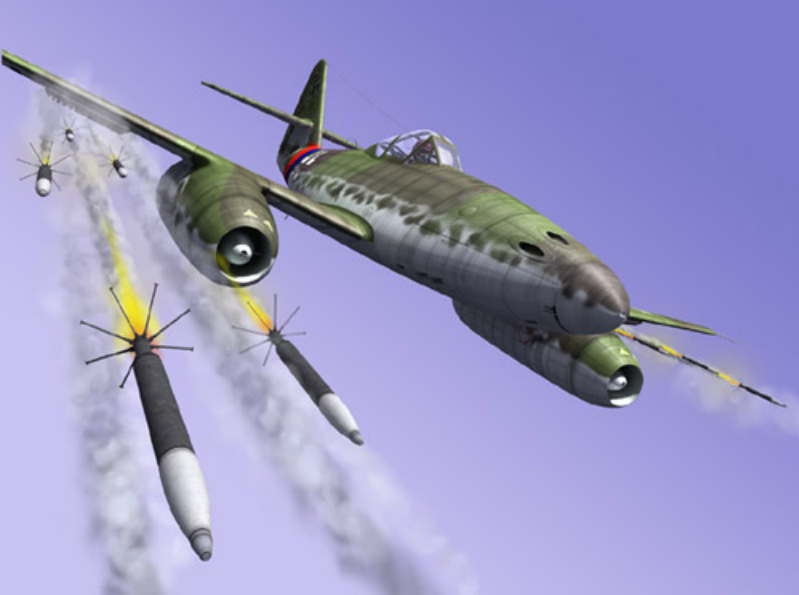
Despite massive use from the first days of the war by the Soviet Air Force aviation rockets, until 1943 in Germany, not a single sample of such weapons. The captured rockets RS-82 and PC-132 did not make much impression on the German specialists. With a good striking effect for shooting at point targets, they were of little use.
It is fair to say that since 1937, in Germany, work has been carried out on turbojet aircraft projectiles, which were stabilized in flight by rotation. In 1939, the 73-mm projectile RZ65 entered testing. A high-explosive and cumulative warhead with armor penetration rates up to 80 mm were created for the missile.
German designers have spent a lot of effort and developed several options for launchers. All these efforts were in vain: the RZ65 projectile was never put into service and was not used in combat.
A surge of interest in this type of weapon as a means of combating an air enemy occurred after the start of massive attacks by Allied bomber aircraft on the territory of the Third Reich.
In 1943, the Luftwaffe adopted the 210-mm air-to-air missile, which was designated Wfr. Gr. 21 "Doedel" (Wurframmen Granate 21) or BR 21 (Bordrakete 21). This ammunition was created on the basis of a reactive mine from a very successful five-barreled 210-mm jet towed mortar Nb.W.42 (21cm Nebelwerfer 42).
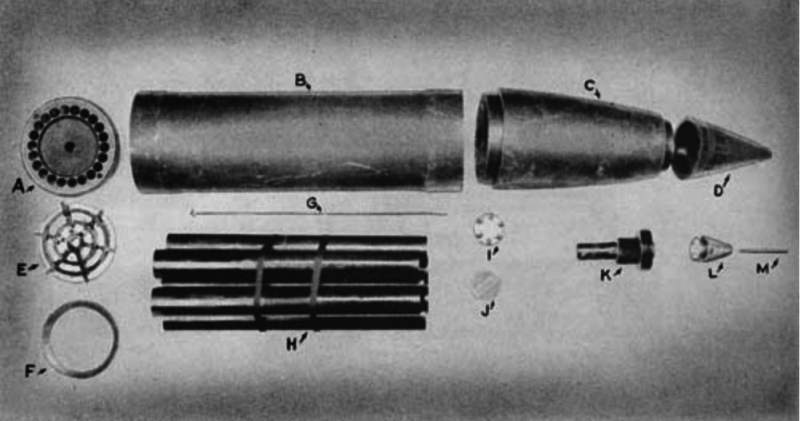
The rocket resembled an artillery shell in its form and had a good ballistic form. 18 kg of fuel was placed in the combustion chamber (7 of tubular pieces of gunpowder). The neck of the chamber was screwed down with a perforated bottom with 22 inclined nozzles (the rocket was stabilized by rotation) and a small central hole in which an electric fuse was inserted.
Projectile Wfr. Gr. 21 weighed 112.6 kg, of which 40.8 kg accounted for the warhead containing 10.17 kg alloy of TNT and RDX. With a maximum speed of up to 320 m / s, the real range at launch from an aircraft did not exceed 1200 meters.
Wfr. Gr. 21 was used mainly to fight heavy bombers. In connection with the specifics of the use of aviation missile Wfr. Gr. 21, unlike the land version, was equipped with a remote fuse, usually set at a distance of operation from 600 to 1200 m.
At this distance, a direct hit by a projectile on an enemy plane was unlikely due to large dispersion. But the probability of hitting a target when firing at a group of bombers was not bad. The radius of the continuous destruction of the fragments in the explosion of a warhead containing kg of explosives containing 10 was more than 40 meters.
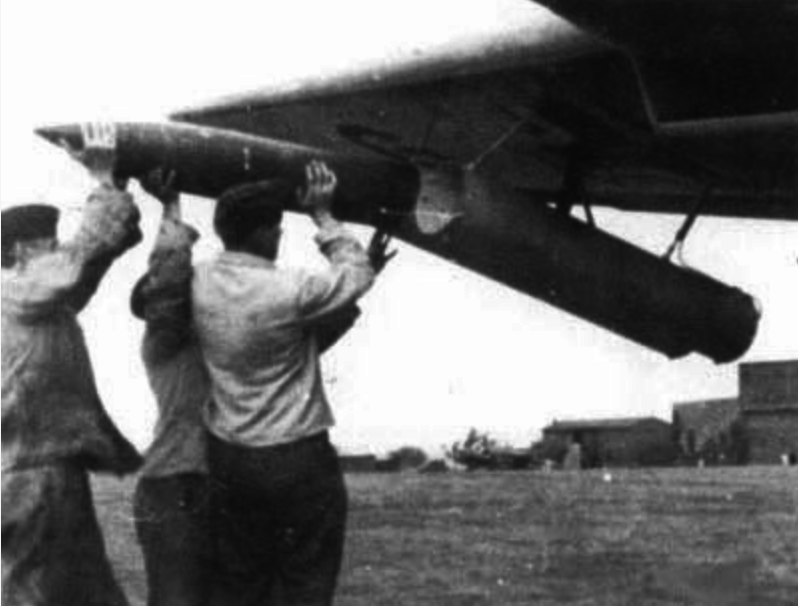
The projectile was launched from a standard tube length 1,3 m. They were fixed in slots for outboard fuel tanks. Like tanks, guides could be dropped in flight.
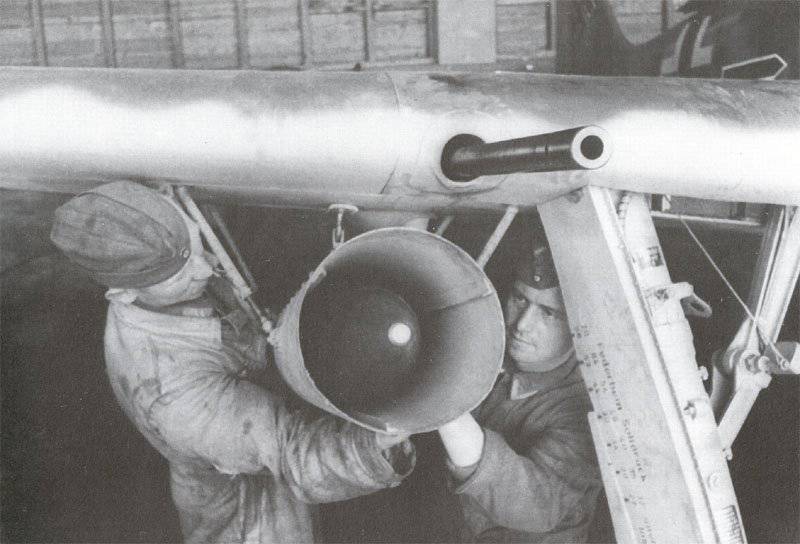
Usually, Messerschmitt Bf-109 single-engine fighters and Focke-Wulf Fw-190 single-wing fighters took the Wfr launcher under the wing. Gr. 21, Messerschmitt Bf-110 two-engine interceptors, Me-210 and Me-410 - two, less often - three for each wing.
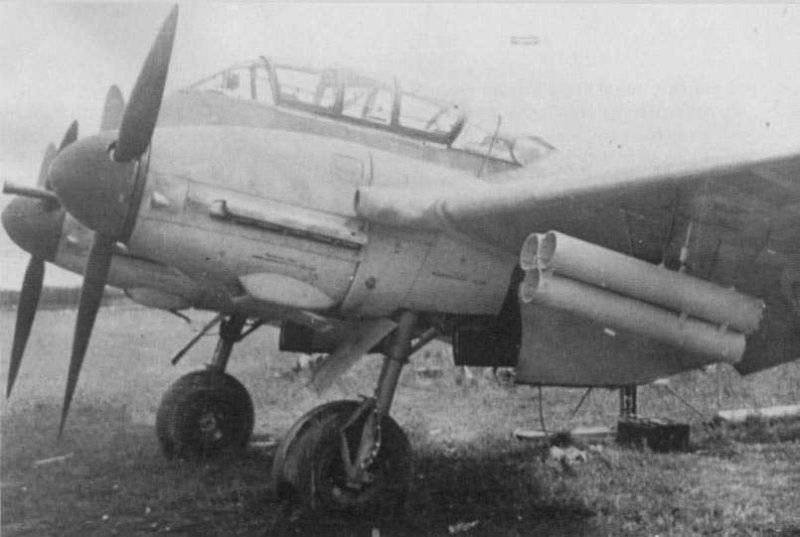
In order to reduce the frontal resistance of launchers, a X.NUMX-barrel revolving launcher W.Gr.6 was developed, which was mounted in the forward fuselage of the Me-42 heavy fighter. Installation fired volleys of two missiles through special cutouts. At the same time the MG-410 nasal guns were dismantled. Several Me-151B were nevertheless equipped with these installations and used in combat.
For the first time rocket Wfr. Gr. 21 was used by fighters in 29 battle on June 1943 of the year, while repelling an Allied air raid near Kiel. In this battle, the explosion of one of the missiles destroyed three B-17 at once.
From October 1943, German interceptors began to be massively equipped with launchers. The tactics of the use of missiles Wfr. Gr. 21 was supposed to launch them in volley on the dense orders of heavy bomber to destroy the system, being outside the zone of effective fire rifle defensive installations. After the bombing system disintegrated, they were shot down one by one with cannon fire.
The cases of direct hit of missiles in bombers were repeatedly recorded. In this case, the aircraft simply tore into pieces or tore off the plane.
Neighboring bombers also often suffered. However, the high strength and survivability of American aircraft allowed them to return to their airfields, having on board killed and wounded crew members. Very often after the return, damaged bombers were written off as non-recoverable.
Rockets Wfr. Gr. The 21 was used by the German air defense fighters very successfully until the Americans began to massively escort the B-17 and B-24 bombers with the P-47 and P-51 fighters. Under these conditions, interceptors equipped with heavy and overall rocket pendants became an easy target. However, in the air defense squadrons of the Wfr. Gr. The 21E "Doedel" was used until the end of the war, being installed on virtually all types of German interceptors.
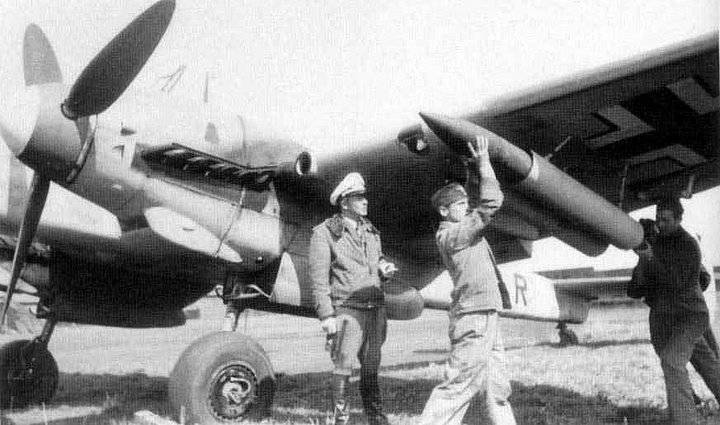
Missiles Wfr. Gr. 21E "Doedel" was used in assault strikes against ground targets. A powerful missile warhead had a good striking effect on area targets. But for the destruction of point objects, the dispersion when shooting was too great. Therefore, the use of 210-mm Wfr. Gr. 21E in assault operations was episodic. There were attempts to arm Wfr. Gr. 21E Hs-129 attack aircraft, but further experiments did not work.
By analogy with 210-mm rocket shells, attempts were made to arm the 280-mm high-explosive rockets with high-explosive rocket mines Wfr.Gr.28, the warhead of which contained 45,4 kg of explosives.
280-mm rockets were tested on the Fw-190A-5 / R6 and subsequently hung from the wings of the improved F-8 series in an amount from two to four.
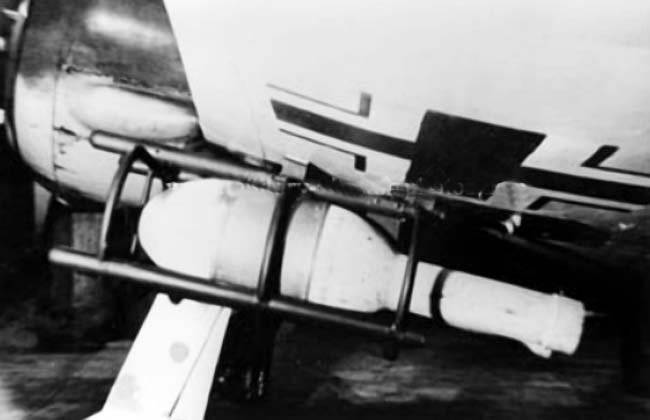
The launcher was a simple welded metal frame, similar to the army launchers, where the projectile was placed.
The very first attempts to use them revealed the low effectiveness of the missiles as when firing at ground targets. Due to the large mass and low speed of the rocket, it had poor accuracy. The rocket suspension and the bulky launcher degraded the flight data of the attack aircraft.
In the autumn of 1944, the most advanced German 55-mm rocket R4 / M Orkan (Smerch) was adopted. Unlike earlier German developments, the rocket was stabilized by folding feather stabilizers. The folded stabilizers were closed with a paper case, which at the start was torn and did not prevent their disclosure from the velocity head.
The success of the rocket was the result of detailed ballistic studies, experiments to improve the accuracy of shooting and analysis of the factors causing the dispersion of the missiles after their launch.
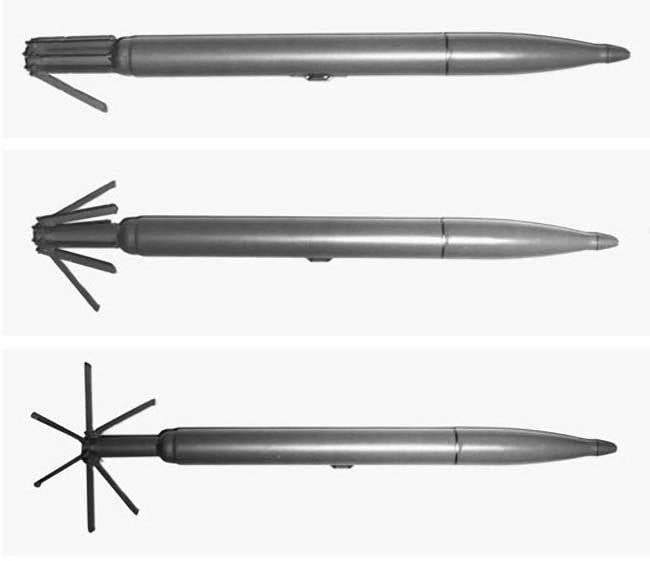
The mass of "Orkan" was 3,85 kg, of which the warhead accounted for 0,8 kg, length - 812 mm. Marching engine reported rocket maximum speed 525 m / s. The effective range of the R4 / M was up to 1200 m.
The missile was successfully used at the final stage of the war against the formations of American and British bombers. R4 / M "Orkan" equipped, mainly jet fighters Me-262.
The most common tactic was launching a volley of all missiles from a distance of about 1 km. At this distance, the missiles covered approximately 15 on 30 m, significantly increasing the probability of hitting at least one enemy bomber. As practice has shown, the hit of one Orkan projectile was usually enough to destroy any four-engine bomber.
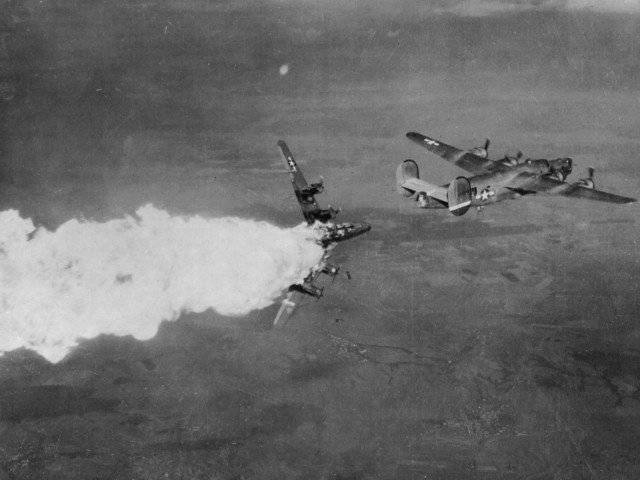
In addition to the Me-262 fighters, this rocket was used to a limited extent on the assault versions of the FW-190, it was also assumed to be the main armament of the missile interceptor equipped with the LRE Va.349 "Natter".
In the second half of the war, the Germans acutely faced the problem of fighting tanks, primarily Soviet. The Luftwaffe has never received an effective anti-tank weapon comparable to the Soviet PTAB.
The successful use of anti-tank grenade launchers by the Germans gave impetus to the beginning of the development of similar weapons for aviation. At the beginning of the 1944, the FW-190 fighter jet passed the test of a package of four RPzB.54 / 1 "Panzerschreck" grenade launchers.
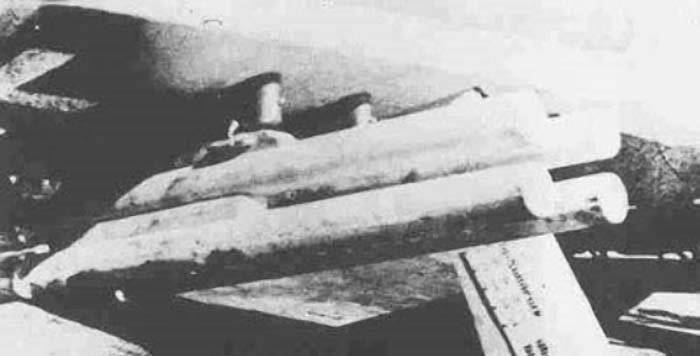
During the tests, it turned out that for the targeted launch of projectiles, the attacking aircraft had to move at a speed of about 500 km / h, otherwise the missile was off the trajectory. To withstand such a high speed at the ground and at the same time to carry out the launch of rockets in some one and a half hundred meters from the target, only a real aces could do it. As a result, the tests were considered unsuccessful.
The attempt to install the Panzerfaust disposable grenade launchers on the aircraft was also unsuccessful. Due to the extremely small effective range, there was a high risk of collision with the target.
In 1944, Czech specialists in Brno, on the basis of the Soviet PC-82, created a rather effective anti-tank aviation missile.
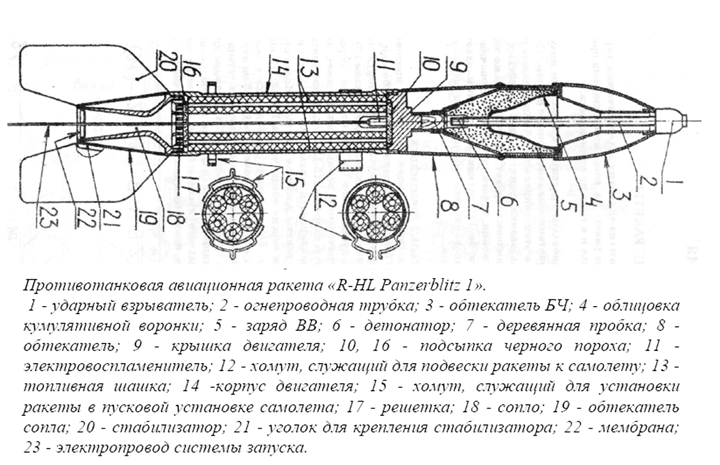
It was a combination of a cruising engine 80-mm feathered fragmentation projectile WGr. "Spreng" - a German copy of the Soviet "eresa" and the 88-mm cumulative grenade RPzB Gr.4322 combat unit. The 80-mm rocket had characteristics close to its prototype, but the firing accuracy due to the rotation reported by the stabilizers (set at an angle to the body of the projectile) was higher than that of the Soviet model. The electric igniter was moved to one of the leading belts, which made the rocket more reliable.
The new R-HL “Panzerblitz 1” rocket projectile (tank lightning) of the air-to-ground class was intended to destroy all types of enemy tanks in a direct hit. Penetration, depending on the angle of the meeting reached 220 mm. The mass of the rocket was 7,24 kg. Rocket speed - up to 374 m / s.
Czech gunsmiths managed to bring the construction of the projectile to perfection and squeeze the maximum out of it, repeatedly surpassing the Soviet prototype in terms of the probability of hitting the target and armor penetration. It was possible to achieve the lowest possible dispersion, each 6-i rocket in the salvo hit the target.
For a number of reasons, the Panzerblitz 1 R-HL missile launch failed. They were armed with 115 Fw 190F-8 / Pb1 aircraft that were sent to the Eastern Front. However, reliable information about the effectiveness of the combat use of these missiles is missing.
Another specialized anti-tank missile was the R4 / M-HL Panzerblitz 2, created on the basis of the Ornan's 55-mm aviation rocket.
The new rocket differed from the base variant in the cumulative warhead of the RPzB Gr.4322 grenade.
The new Panzerblitz 4 rocket R2 / M-HL, due to the increased mass of 1 kg, developed a slightly slower speed than the Panzerblitz 1 - 370 m / s. She was able to hit targets at distances to 1200 m. The missile’s curb weight was 5.37 kg, the warhead weight was 2.1 kg.
From December 1944, the rocket, which showed a fairly high efficiency, began to enter the Luftwaffe assault squadrons armed with FW-190 F fighter-bombers. There was also another version of this Panzerblitz 3 rocket with a different warhead and increased flight speed.
Due to the shortage of time and the collapse of the Third Reich that followed shortly, fortunately, they failed to organize the mass production of these fairly advanced missiles and organize their large-scale use. Before the outbreak of war, German specialists underestimated the role of aircraft missiles as means of aircraft armament, and, as a result, work on them began too late. Despite the fact that a number of very successful models were developed, aircraft missiles were used in the Luftwaffe on a very limited basis. Not going to any comparison on the scale of the use of this type of weapon in the combat aircraft of the USSR, Great Britain and the USA.
Developed during the war in Germany, the 55-mm rocket R4M "Orkan" had a great influence on shaping the appearance of many post-war unguided aircraft rockets (NAR) developed in different countries. Thus, in the USSR, using a similar scheme, a large 57-mm NAR C-5 family was created.
The German scheme of the stabilization unit developed for this rocket proved so successful that, to date, the rocket-builders of all countries in the designs of the overwhelming majority of the NAR use it, sometimes making minor modifications.
Based on:
http://www.barthworks.com/aviation/b17damaged.htm
http://www.oocities.org/lastdingo/aviation/r4m.htm
http://www.wehrmacht-history.com/luftwaffe.htm
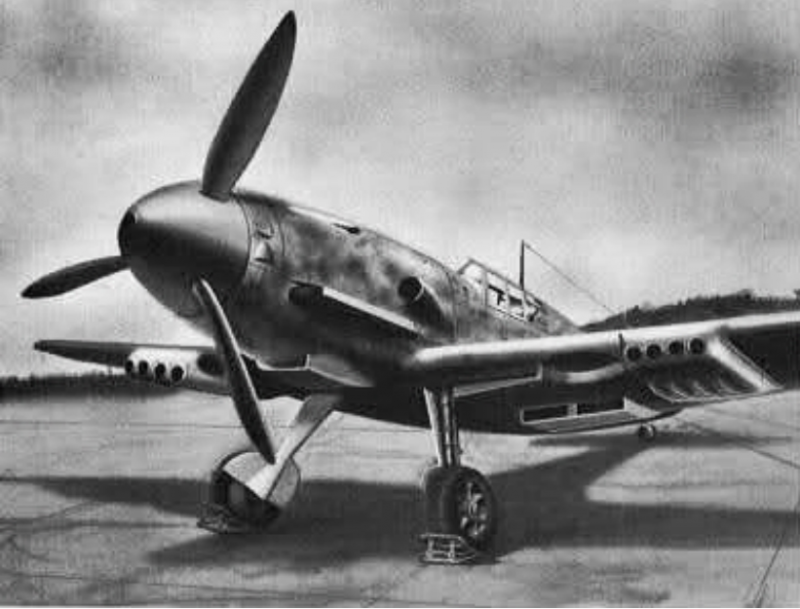
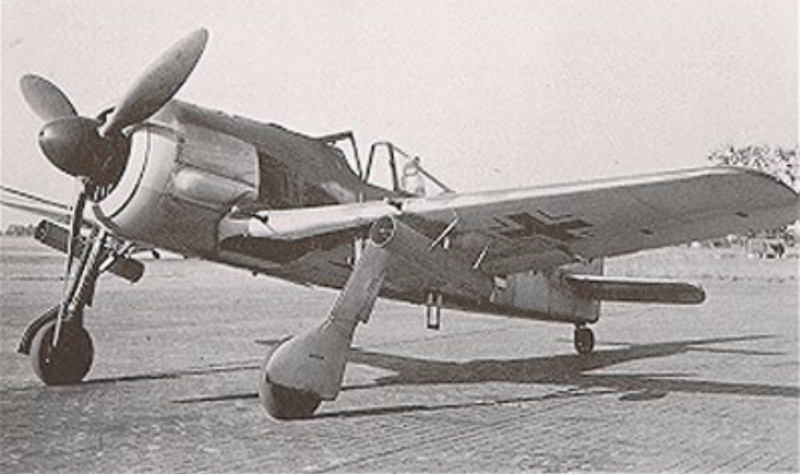
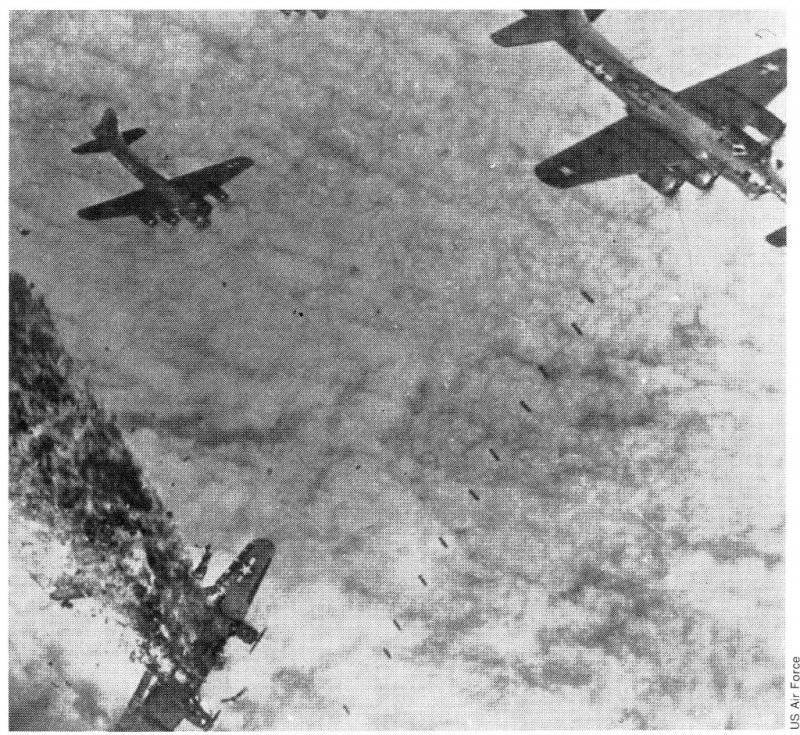
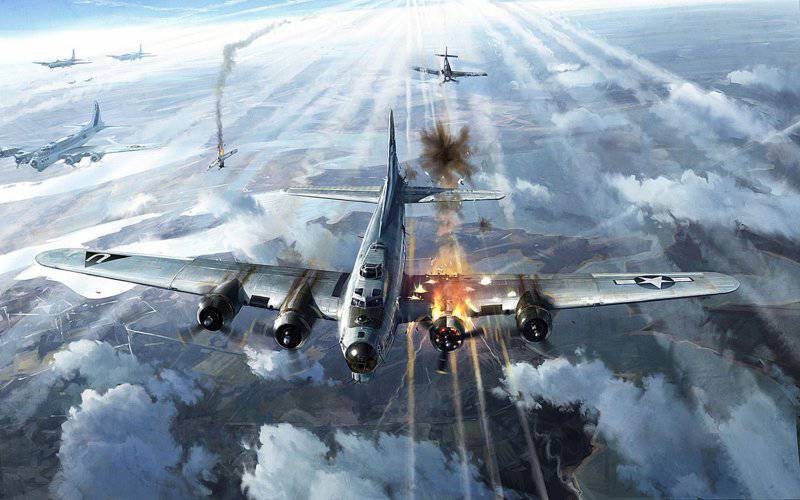
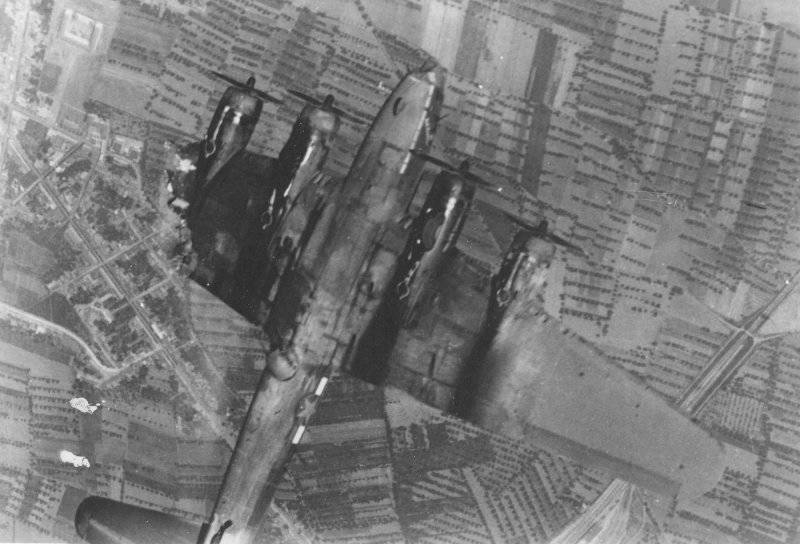
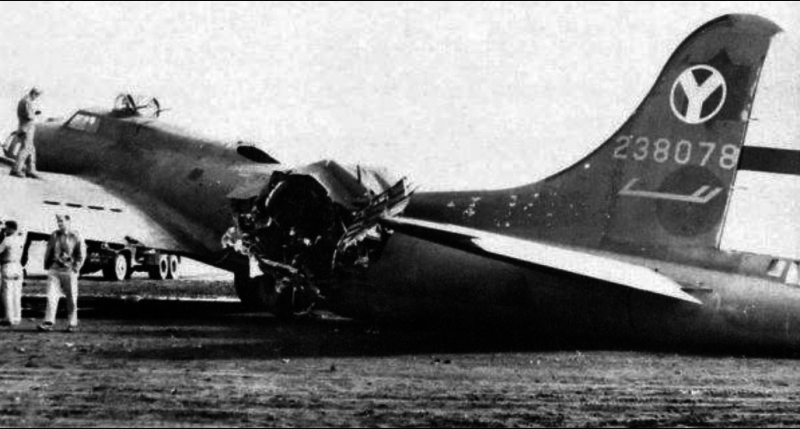

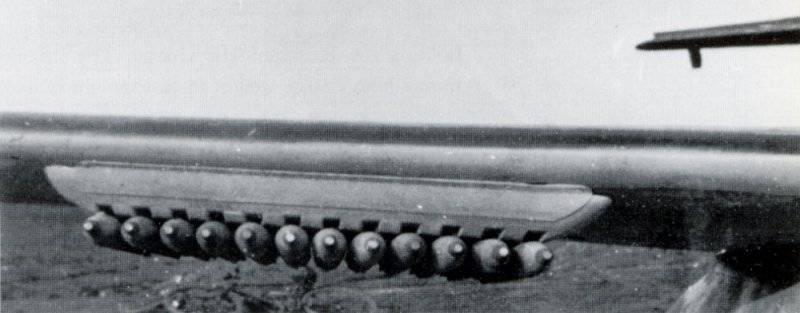
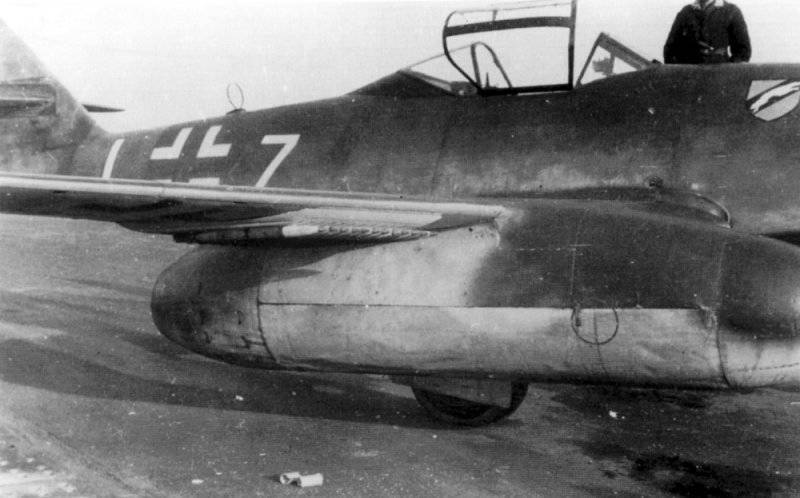
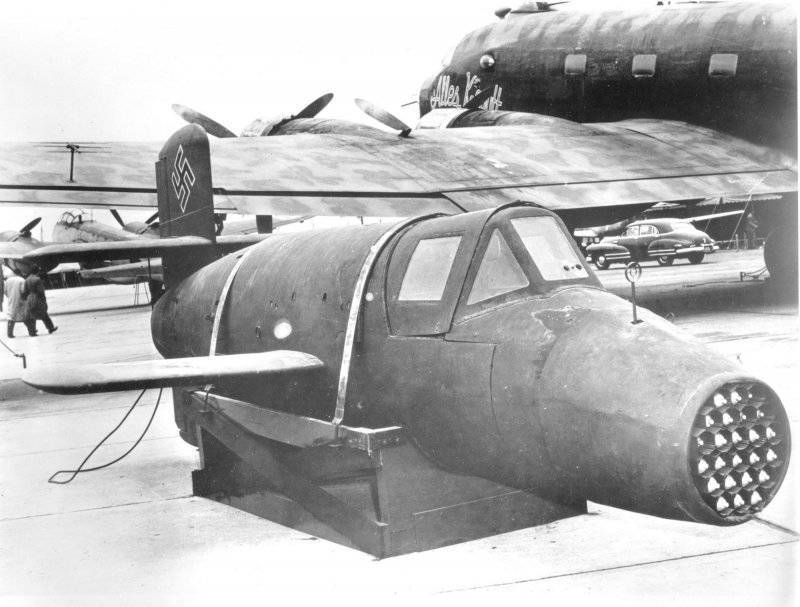
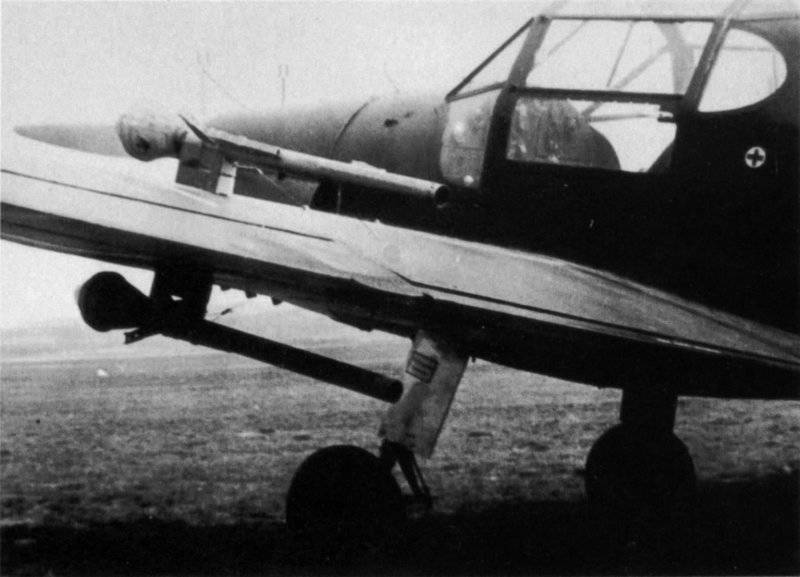

Information